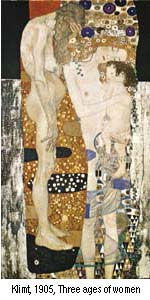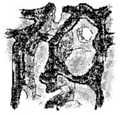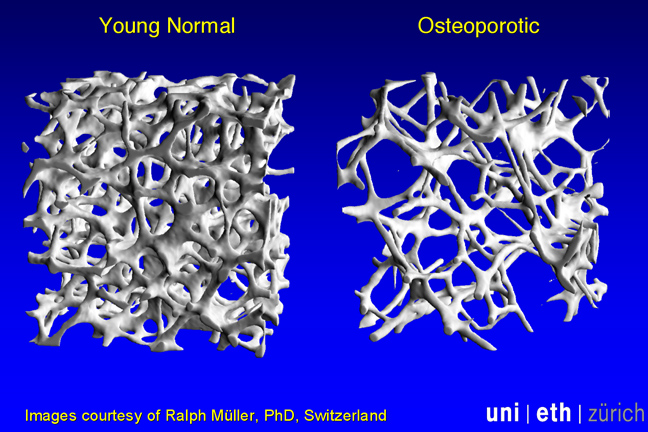
 |
Osteoporosis is a bone disease in which the amount of bone is decreased and the structural integrity of trabecular bone is impaired. Cortical bone becomes more porous and thinner. This makes the bone weaker and more likely to fracture.
In 1994, a committee of the World Health Organization defined osteoporosis based on bone density. The bone density is the weight of mineral per volume of bone. The most common method to measure this is with a bone density machine which results in weight per area of bone (mg/cm2). It has become common to translate this into units called "T-scores" because the different kinds of machines do not measure bone the same way. Details are explained in the bone density section. Accordingly, the categories were:
1. Normal bone (T-score better than -1)
2. Osteopenia (T-score between -1 and -2.5)
3. Osteoporosis (T-score below -2.5)
4. Severe osteoporosis (low T-score and a fragility fracture)
Many factors lead to fractures, not just bone density. Age, heredity, body weight, diseases, lifestyle, frailty, and amount of trauma all play important roles. The risk of a fracture due to osteoporosis can be estimated using these factors in addition to the bone density.
| NORMAL | OSTEOPENIA | OSTEOPOROSIS | SEVERE OSTEOPOROSIS |
|
| Cortical bone |
 |
 |
 |
 |
| Trabecular bone |
 |
 |
 |
 |
This image shows trabecular bone structure in the lower spine of a young adult compared to an osteoporotic elderly adult.

Image courtesy of Ralph Mueller, Ph.D., Switzerland
Updated 3/14/2015, Reviewed 2/10/16

